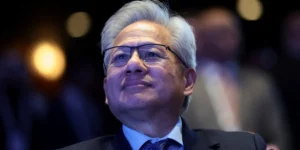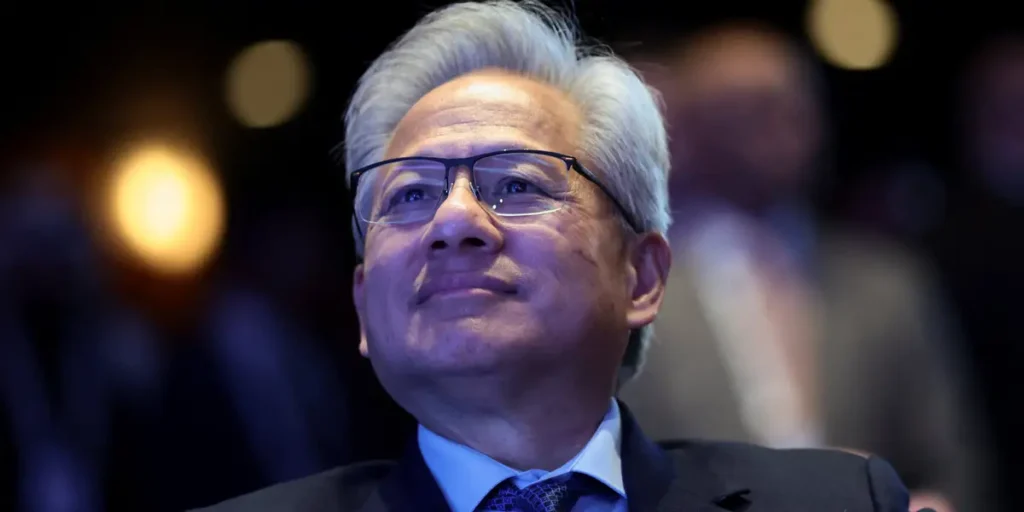Nvidia’s blockbuster earnings just brought relief to Wall Street.
On Wednesday, the chip giant reported $57 billion in revenue for the quarter and delivered another blowout performance from its data center division, which brought in $51 billion, surpassing the $49.3 billion analysts projected.
Nvidia also lifted its fourth-quarter guidance to expect $65 billion in sales. The optimistic outlook reinvigorated AI and semiconductor stocks after several rocky days. Nvidia stock jumped more than 3% in after-hours trading, while shares of other chipmakers, like Advanced Micro Devices, Broadcom, and Taiwan Semiconductor, also saw gains.
Here are the key takeaways from Nvidia’s Q3 earnings, from fear of an AI bubble to the various new partnerships the chipmaker is engaging in.
1. The AI bubble
CEO Jensen Huang addressed concerns about the AI bubble head-on.
“There’s been a lot of talk about an AI bubble,” he said as he kicked off his earnings address. “From our vantage point, we see something very different.”
“As a reminder, Nvidia is unlike any other accelerator,” Huang added. “We excel at every phase of AI, from pre-training and post-training to inference.”
Huang added that the transition from using CPUs to GPUs, AI’s ability to generate revenue through ads, and the rise of agentic AI systems that could spark a new wave of applications are all reasons he still sees growth in the coming years.
As an AI optimist, Huang had also previously dismissed concerns that AI could displace a large number of jobs.
2. New partnerships
Nvidia gave its new partnerships a big shoutout.
Over the earnings call, Nvidia highlighted new deals with OpenAI, Anthropic, Uber, and xAI.
Earlier in September, Nvidia announced a joint letter of intent with OpenAI “for a landmark strategic partnership to deploy at least 10 gigawatts of Nvidia systems for OpenAI’s next-generation AI infrastructure to train and run its next generation of models on the path to deploying superintelligence.” The plan, per the press release, is for Nvidia to invest as much as $100 billion into data center infrastructure using Nvidia hardware to start coming online by the second half of 2026.
On Tuesday, Nvidia struck a “deep technology partnership” with Anthropic and pledged up to $10 billion in investment for the startup. Anthropic also announced on the same day that it would spend $30 billion on compute to scale its Claude AI model on Microsoft’s Azure cloud platform, which would be “powered by Nvidia.”
On Wednesday, ahead of the earnings call, Nvidia and xAI also announced that a massive data center in Saudi Arabia, which is loaded with hundreds of thousands of Nvidia chips, will have Elon Musk’s AI startup as its first customer.
3. China remains a concern
Export restrictions on China continue to be a concern.
CFO Colette Kress said during Wednesday’s earnings call that Nvidia is “disappointed” by the US export rules that continue to limit its ability to sell advanced AI chips to China, and added that large China orders didn’t materialize this quarter because of “geopolitical issues” and rising competition in the market.
Kress also maintained Nvidia’s outlook of assuming zero data-center or compute revenue from China in the fourth quarter, though the company plans to keep engaging with both US and Chinese regulators.
Despite the uncertainty, DA Davidson analyst Gill Luria said ahead of the earnings that his team doesn’t see AI demand slowing next year and expects Nvidia to hold its lead even as rivals grow and trade tensions persist.
4. Key growth areas
Nvidia is bullish on robotics and AI infrastructure.
In its earnings report, Nvidia highlighted robotics as one of its key growth areas. Automotive sales in Q3 totaled $592 million, which is a 32% increase compared to the same quarter in 2024.
On Wednesday, Nvidia said in its latest 10-Q filing that expanding power infrastructure is a “complex, multi-year process” that comes with many hurdles, but the company remains positive that AI infrastructures, such as data centers, will drive growth.
“We believe Nvidia will be the superior choice for the three to $4 trillion in annual AI infrastructure built,” said Kress during the earnings call. “We estimate by the end of the decade, demand for AI infrastructure continues to exceed our expectations.”
“This past quarter, we announced AI factory and infrastructure projects amounting to an aggregate of 5 million GPUs,” Kress added.
5. The hyperscalers
Nvidia says hyperscalers are driving a huge share of its growth.
Kress told investors during the earnings call that hyperscalers like Meta are expected to account for “roughly half” of Nvidia’s “long-term opportunity” as they shift more workloads to accelerated computing and generative AI.
She added that Nvidia is helping Meta boost service quality, increasing the time users spend on Threads and Facebook.
Huang, however, pushed back on the idea that only the biggest tech giants are buying GPUs. He said that investing in Nvidia’s GPUs “only improves their scale, speed, and cost for general from general-purpose computing,” especially for companies with more limited resources that need to “keep driving the cost down.”


